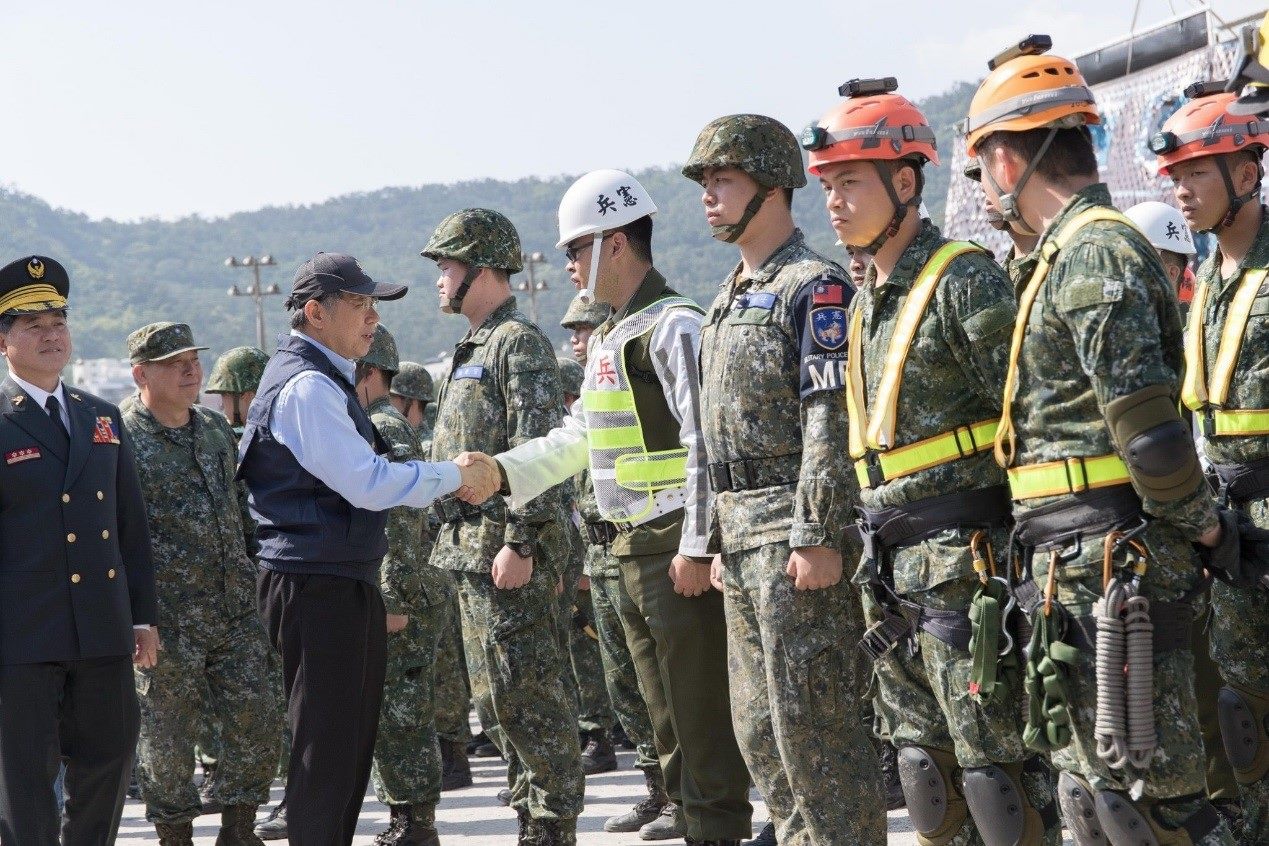Earthquake, Volcanic Hazard Drills Conducted for Better Disaster Management Plans
 Mayor Ko Wen-je presided over the disaster relief exercise taking place at the Fuxinggang Campus of the National Defense University on March 31. The event is the first ever in Taiwan to include disaster scenarios caused by earthquakes and volcanic eruptions.
Mayor Ko Wen-je presided over the disaster relief exercise taking place at the Fuxinggang Campus of the National Defense University on March 31. The event is the first ever in Taiwan to include disaster scenarios caused by earthquakes and volcanic eruptions.
A total of 3,000 personnel from Taipei City Government, national armed force, civic groups, and international rescue teams, as well as a total of 164 vehicles and five helicopters were mobilized for the exercise. To share knowledge and exchange experiences, rescue and relief teams from Tokyo, Yokohama, and Seoul were also invited to join the event.
During his speech, Mayor Ko thanked all of the participants from Taiwan and abroad for their input to help improve the city’s disaster preparedness. Taiwan is prone to three types of natural disasters—typhoon, earthquake, and volcanic eruption. According to the mayor, with an average of two or three typhoons making landfall in Taiwan and bringing destructive impact each year, as well as consequential evaluations of post-disaster recovery efforts, the city has developed well rounded protocols for typhoon-related recovery work. As for the other two types of disasters, more work will be required.
The mayor noted that an earthquake with a magnitude of 7.0 or higher could cause approximately 1500 buildings in Taipei to collapse, leaving thousands injured or dead. To mitigate the potential damage an earthquake can cause, the city has taken a series of measures, such as seismic evaluations for old buildings, repair projects for buildings on liquefaction-affected sites, and construction of wells for times of emergency.
Part of the drill involves rescue operations in the event of a volcanic eruption for the first time. The mayor remarked that the city government is studying the possibility for installing an early warning system for volcanic eruptions, adding that the inputs from the academia and regular drills are both important in minimizing casualties.

![Taiwan.gov.tw [ open a new window]](/images/egov.png)
